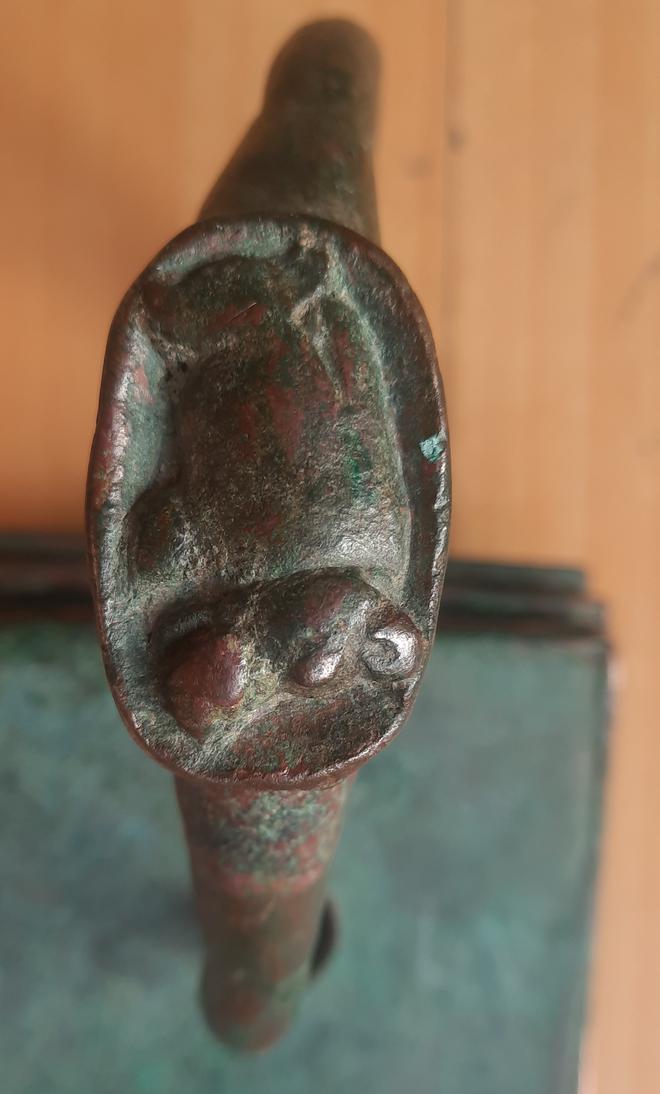The reconstruction of History, particularly that of the Ancient World where sources are few and far, is often likened to detective work.
Researchers at the Pune-based Bhandarkar Oriental Research Institute (BORI), which houses South Asia’s largest collection of manuscripts and rare texts, recently embarked on a grand adventure in detection after which they claim to have shed new light on Shilabhattarika— the celebrated Sanskrit poetess of Ancient India by establishing her as a daughter of the famed Chalukyan Emperor, Pulakeshin II of Badami (in modern Karnataka).
Following the decoding of inscriptions on copper plates earlier this month, noted Sanskrit scholar Dr. Shreenand Bapat, registrar and curator at BORI, said it was now reasonably certain that Shilabhattarika was a Chalukyan princess, possibly the daughter of Pulakeshin II, who ruled from 610-642 CE and had famously defeated Harshavardhan of Kanauj in a battle near the banks of the Narmada River in 618 CE.
Speaking to The Hindu, Dr. Bapat said that the importance of this decipherment shed a revelatory new light on Shilabhattarika, who stood out as a poetess in the ancient Indian world in the heavily male-dominated field of classical Sanskrit literature.
The Sanskrit poet-critic Rajashekhara (who lived in the 9th-10th century CE) and was the court poet of the Gurjara-Pratiharas, has praised Shilabhattarika for her elegant and beautiful compositions.
Noted Marathi poetess, Shanta Shelke, too, has drawn inspiration from Shilabhattarika’s verse to compose one of her most iconic songs— toch chandrama nabhat (translated as ‘it is the same moon in the sky’).
The decoding of the copper plates also marks a notable shift in the historiography of Badami Chalukyas by placing Shilabhattarika as having lived in the 7th century CE rather than the current theory which has her as a wife of the 8th century Rashtrakuta ruler, Dhruva.

Dr. Bapat said that an antiquary enthusiast Amit Lomte, had brought a copperplate charter with five copper plates said to be dating from the reign of the Badami Chalukyan ruler Vijayaditya (696-733 CE) for decipherment.
“The charter had five plates measuring 23.4 cm by 9.4 cm, held together by a copper ring bearing a beautiful v araha (boar) seal. The v araha seal is the trademark of the Badami Chalukyas. The charter contained a Sanskrit text of a total of 65 lines inscribed in late-Brahmi script. It was Dr. Amruta Natu, Assistant Curator, BORI, who drew my attention to Shilabhattarika’s name in the charter,” he said.
Dr. Bapat, who worked through the genealogies of the Badami Chalukyas and the Western Gangas, had cracked the ‘identity’ of Shillabhattarika by early April.
A primary reading of the plates revealed that Vijayaditya had donated the village of Sikkatteru in the Kogali Vishaya to a Vedic scholar named Vishnusharma in the month of Magha, Shaka year 638, corresponding to January-February 717 CE.
“The village [Sikkateru] was identified by Prof. Shrinivas V. Padigar, a renowned epigraphist, as Chigateri situated near Kogali in the Vijayanagar district of Karnataka. But this was not all. The plates revealed that Vijayaditya had donated the village on request by Mahendravarma, the son of Shilabhattarika, the daughter of ‘Satyashraya’,” says Dr. Bapat.
The (decoded) text goes on to say that “on recommendation of Mahendravarma, the son of Shilabhattarika, King Vijayaditya Chalukya had donated the village of Chigateri to a scholar scholar Vishnusharma.”
The BORI curator says that while other Badami Chalukyan rulers affixed the title of ‘Satyashraya’ (translated as “patron of truth”) to their names, the only ruler to be known purely by this title was Pulakeshin II.
Furthermore, the names of Shilabhattarika’s father-in-law Mokkara (or Mushkara), and his father Durvinita (the most important ruler of the Western Ganga dynasty who ruled from 529-579 CE) are also given in the plates.
“This ‘Satyashraya’ is nobody else but the famed Pulakeshin II who was the great-grandfather of Vijayaditya. As given in the plates, Shilabhattarika was married to Dadiga, a prince of the Ganga lineage of Talakkad. The most important ruler of the Western Ganga dynasty, Durvinita, was succeeded by Mokkara, who ruled till 604 CE,” says Dr. Bapat.
Mokkara was succeeded by Polavira, his eldest son while his younger son Dadiga (Shilabhattarika’s husband) was possibly deputed to Kogali as its governor.
“His son Mahendravarma continued in the same position. It is well-known that the Gangas acted as subordinates to the Chalukyas of Badami and fought against the Pallavas of Kanchi. So, by a rough calculation, Mahendravarma must be above 70 years old when these plates were issued,” Dr. Bapat said.
The Pallavas were the sworn nemesis of the Badami Chalukyas, with Pulakeshin II being defeated (and possibly killed) in 642 CE in the invasion by the Pallava Narasimhavarman I.
More than genealogies, the decipherment brings into focus the importance of Shilabhattarika and her poetry.
“Over 40 of Shilabhattarika’s verses are said to be extant. Rajashekhara, the great 9th-century critic lauds her compositional style. According to him, Shilabhattarika’s works adhere to the Panchali style that calls for a balance of the word with its meaning. In this regard, Rajashekhara even places her at par with Banabhatta, the court poet of Harsha,” Dr. Bapat said. The decoding of the plates also gives an insight as to how Shilabhattarika might have acquired such a high degree of proficiency in composing poetry, that placed her on an equal footing with the most exalted male poets of the age.
“It is well-known that the Badami Chalukyas and the Western Gangas were great patrons of literature. Shilabhattarika’s great-grandfather-in-law, Durvinita (noted ruler of the Western Gangas), was himself a proficient composer, and had patronised Bharavi, the author of a classical epic Kiratarjuniya. With an illustrious literary pedigree on both sides of her family, it is not surprising that Shilabhattarika turned out to be a poetess of a high order. I think with the Pune copper plates, we now have an altogether fresh look at this classical poetess of ancient India,” said Dr. Bapat.







